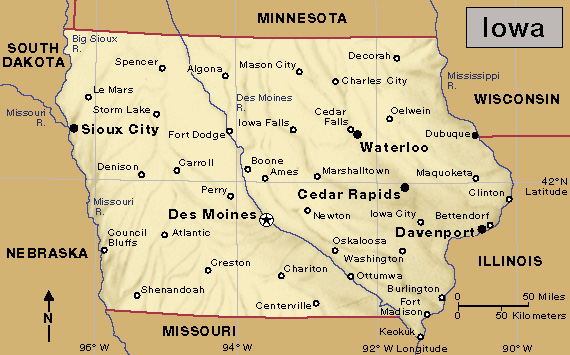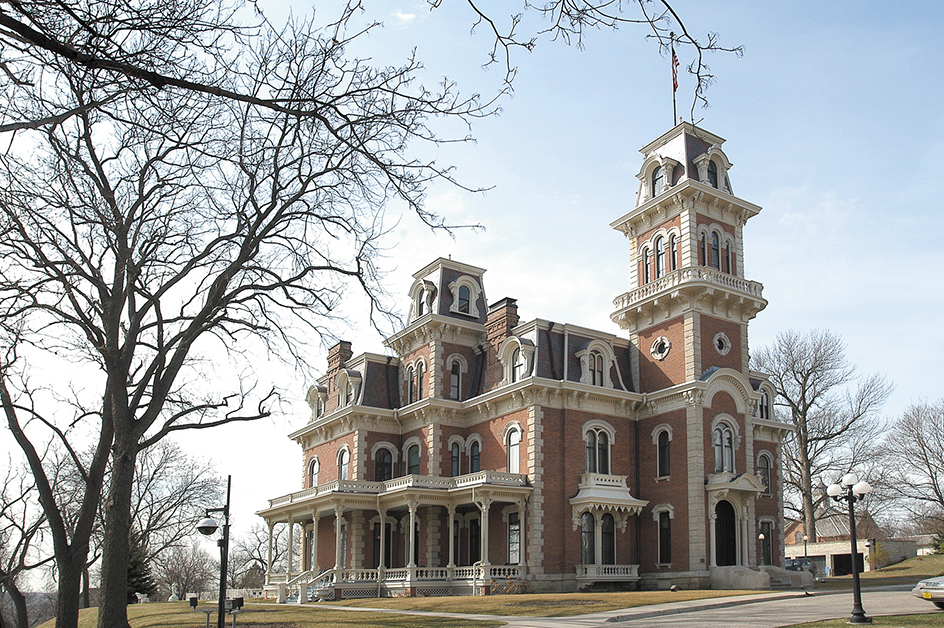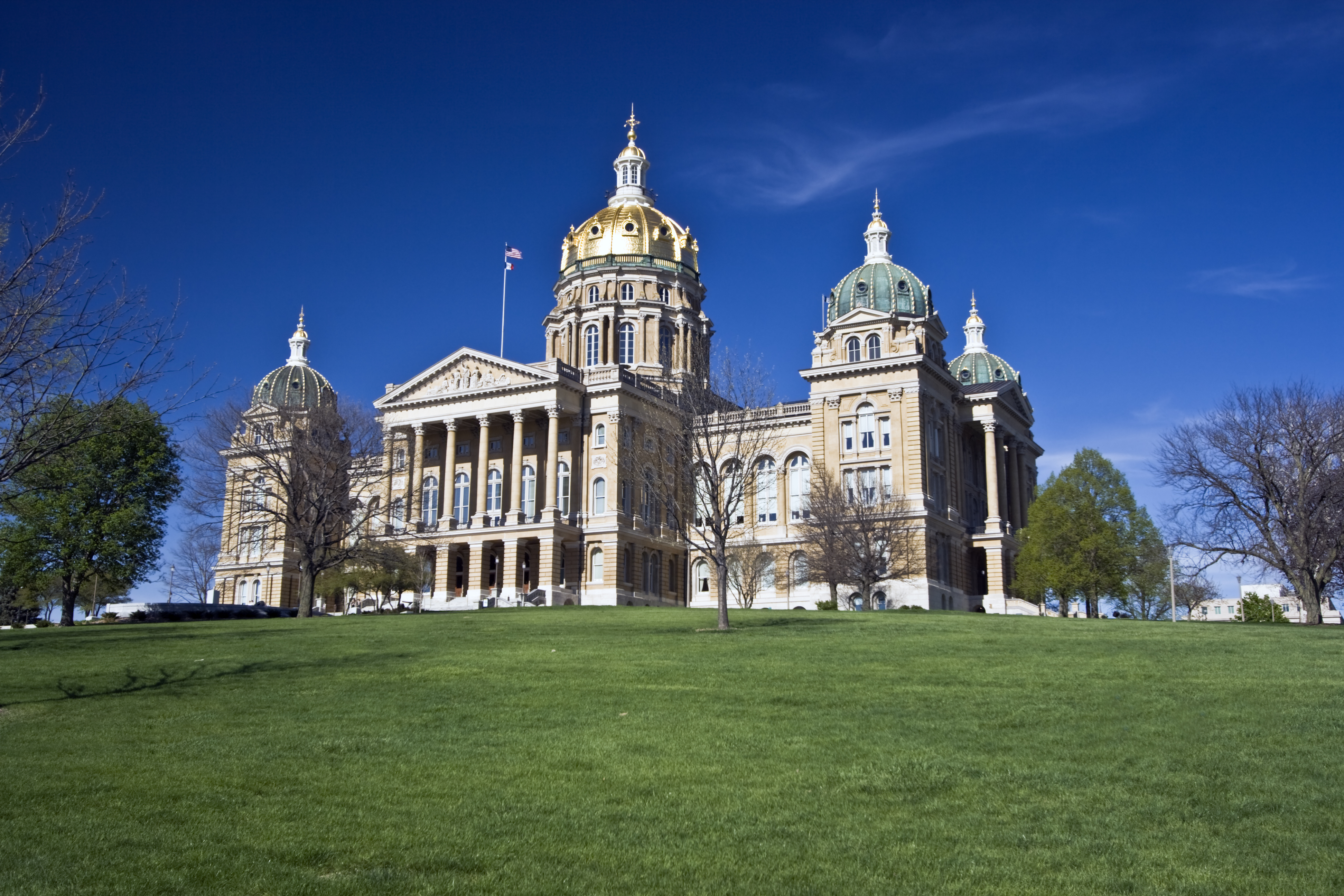Des Moines, << duh MOYN >> (pop. 214,133; met. area pop. 709,466), is the capital, largest city, and chief manufacturing center of Iowa. It is also the county seat of Polk County. The city lies in south-central Iowa, where the Des Moines and Raccoon rivers meet.

The city takes its name from the Des Moines River. Many historians believe the river’s name came from Indians who built mounds in the area and called the river Moingona (river of the mounds). Some historians believe that the name comes from the French word moines (monks), after a group of Trappist monks who lived near the mouth of the river.
Description.
Des Moines covers 91 square miles (235 square kilometers). The golden-domed State Capitol overlooks the city’s downtown from the east. Downtown Des Moines is the site of Iowa’s tallest building, called 801 Grand. The building rises 630 feet (192 meters).
The city’s attractions include the Des Moines Art Center; the Civic Center of Greater Des Moines; the Iowa Events Center; the Science Center of Iowa; the State Historical Museum; Western Gateway Park, which includes the John and Mary Pappajohn Sculpture Park; Terrace Hill, the governor’s mansion; and Living History Farms, a collection of working farms that demonstrate the history of agriculture. The Iowa State Fair, held in Des Moines, draws many visitors to the city each August. Des Moines is the home of Des Moines, Drake, and Grand View universities.

Economy.
Des Moines is Iowa’s main commercial center and one of the largest insurance centers in the world. Dozens of insurance companies have their headquarters in Des Moines. State government and the health care industry are other leading employers. There are also hundreds of manufacturing plants in the area. Food processing is a leading industrial activity. Other industries produce fabricated metal goods, farm machinery, plastics and rubber products, and printed materials. Many exporting and importing firms operate in the area. Several freight railroads and the Des Moines International Airport serve the city.
Government and history.
Des Moines has a council-manager form of government. The council consists of seven members, including the mayor, all of whom serve four-year terms. The voters of the entire city elect the mayor and two other council members. The other members are elected from the city’s various wards. The council hires a city manager to carry out its policies.
The Sauk and Fox Indians lived in the area before white settlers arrived. In 1843, the United States Army established a post where the city now lies. The Army built Fort Des Moines at the site, on land purchased from the Indians. By 1845, the Indians had given up their rights to the region. In 1853, the settlement surrounding the fort was incorporated as the town of Fort Des Moines. The word Fort was dropped from the name in 1857. That same year, the Iowa legislature chose Des Moines as the state capital because of its central location within Iowa. Des Moines grew rapidly after it became the capital. Its population jumped from 3,965 in 1860 to 50,093 in 1890.

Des Moines later developed as a military training center. In 1898, during the Spanish-American War, the city had a National Guard camp. In 1902, a cavalry post called Fort Des Moines was established there. It served as a training camp during World War I (1914-1918) and World War II (1939-1945). The Women’s Army Corps (WAC) was founded there in 1942, and Fort Des Moines was its training center through the end of World War II.
The population of Des Moines declined during the 1960’s as large numbers of people moved to the suburbs. Business in the city’s downtown area suffered as a result. In the early 1980’s, Des Moines renovated its central business district. Major construction projects included new office skyscrapers, shopping malls, housing complexes, and convention and entertainment centers. Glass-enclosed elevated walkways called skywalks were built to connect most major buildings.

By the beginning of the 2000’s, about 3 miles (5 kilometers) of skywalks lined buildings in the downtown area. Construction also began on a number of new buildings, including an education center, an events center, a science museum, and a public library. The education center, where a number of colleges and universities offer adult education classes, opened in 2004. Also opening in 2004 was Hy-Vee Hall, a convention center that forms part of the events center complex. The Science Center of Iowa, an interactive museum, opened in 2005. A new Central Library building opened in 2006.
